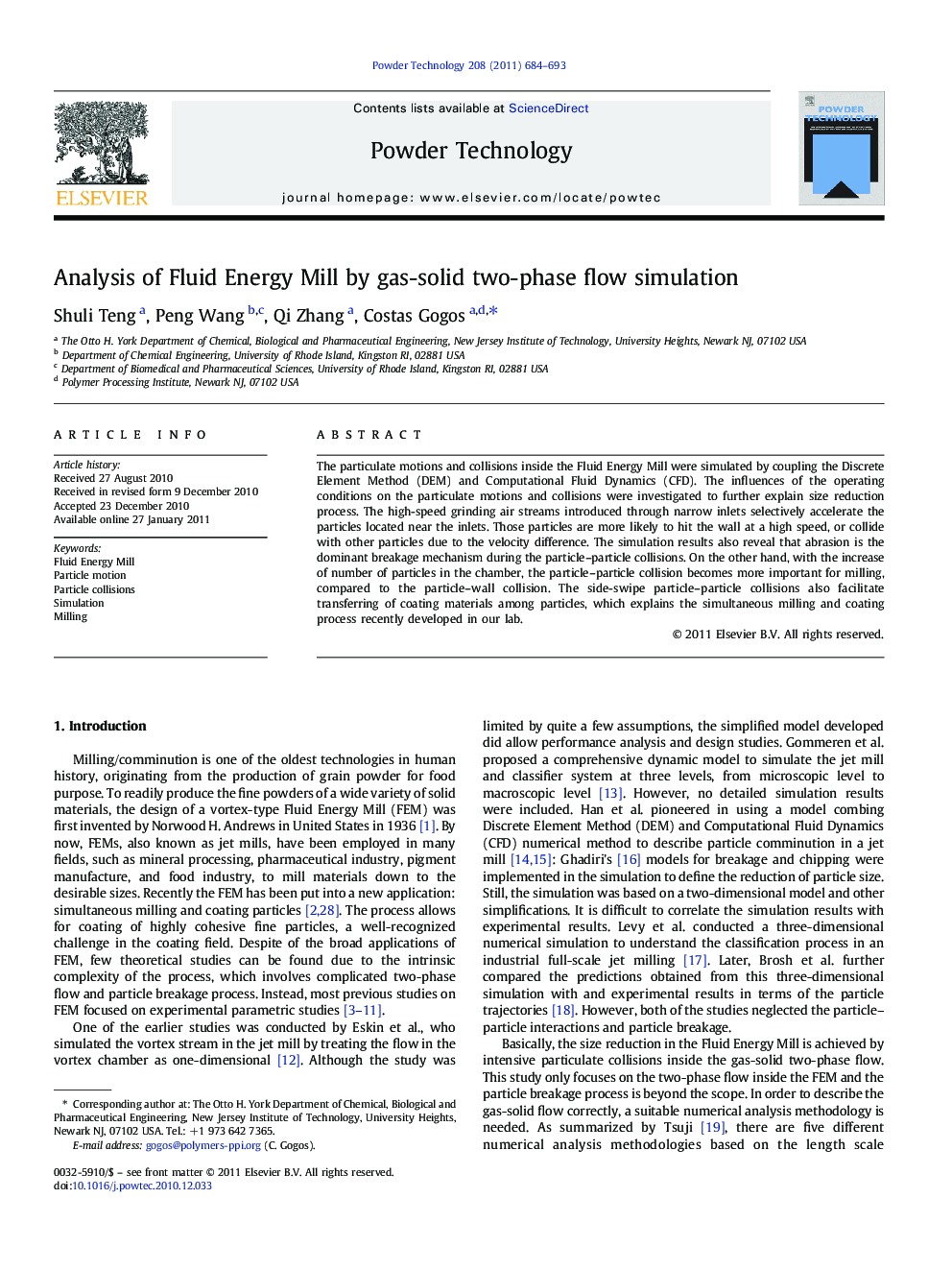| Article ID | Journal | Published Year | Pages | File Type |
|---|---|---|---|---|
| 237602 | Powder Technology | 2011 | 10 Pages |
The particulate motions and collisions inside the Fluid Energy Mill were simulated by coupling the Discrete Element Method (DEM) and Computational Fluid Dynamics (CFD). The influences of the operating conditions on the particulate motions and collisions were investigated to further explain size reduction process. The high-speed grinding air streams introduced through narrow inlets selectively accelerate the particles located near the inlets. Those particles are more likely to hit the wall at a high speed, or collide with other particles due to the velocity difference. The simulation results also reveal that abrasion is the dominant breakage mechanism during the particle–particle collisions. On the other hand, with the increase of number of particles in the chamber, the particle–particle collision becomes more important for milling, compared to the particle–wall collision. The side-swipe particle–particle collisions also facilitate transferring of coating materials among particles, which explains the simultaneous milling and coating process recently developed in our lab.
Graphical AbstractParticulates motions and collisions in the grinding chamber of Fluid Energy Mill were simulated by coupling of DEM and CFD. Particulates with different velocity circulate along the peripheral wall, due to the centrifugal forces exerted on the particulates. This simulation result is consistent with the experimental observation.Figure optionsDownload full-size imageDownload as PowerPoint slideResearch highlights► Simulations of particulate motions and collisions by coupling CFD and DEM. ► Disclose the size reduction process in Fluid Energy Mill. ► Side-swipe particle–particle collisions facilitate transferring of coating materials.
